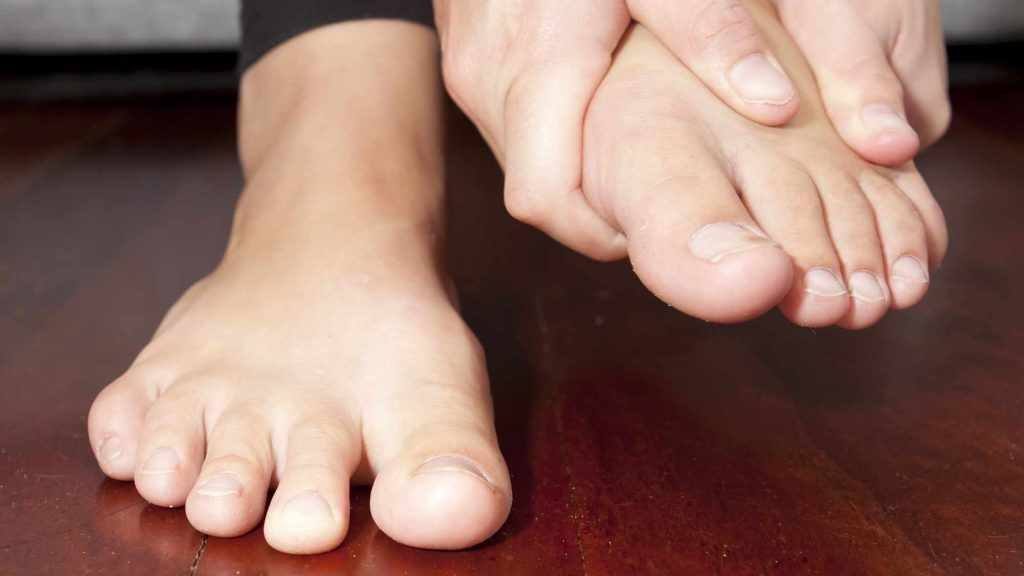
The COVID-19 pandemic has caused wide-reaching changes, including the temporary closure of some schools, as well as gyms, salons, restaurants and other businesses. In addition, many people have transitioned to working from home. These changes affect many elements of your health, including how you use your feet. And this can lead to some medical issues.
Transition to bare feet
Transition from work or school to being at home has led to more people not wearing shoes every day as they previously had when leaving the house. Now they spend most of their time barefoot or stocking-footed.
While going without shoes may feel good in the short term, a lack of arch and foot support can increase the risk of foot conditions, including:
Plantar fasciitis
Plantar fasciitis, which is one of the most common causes of heel pain, is the inflammation of a thick band of tissue that runs across the bottom of your foot and connects your heel bone to your toes. Plantar fasciitis commonly causes stabbing pain that usually occurs with your first steps in the morning.
Metatarsalgia
Metatarsalgia occurs when the ball of your foot becomes painful and inflamed. Symptoms include a sharp, aching or burning pain in the ball of your foot, and pain that worsens as you stand, run, walk or flex your feet.
Achilles tendinitis
Achilles tendinitis is an overuse injury of the band of tissue that connects your calf muscles at the back of the lower leg to your heel bone. The pain associated with Achilles tendonitis typically begins as a mild ache in the back of the leg or above the heel after running or other sports activity.
Tendonitis
Tendinitis, or inflammation or irritation of a tendon, can occur in your foot. It may be caused by overcompensating or correcting for other conditions. It is described as a dull ache with tenderness and mild swelling.
The best way to prevent these conditions and avoid pain or injury is to dedicate a pair of supportive athletic shoes or slippers to wear while in your home.
Shoes do more than support your arch and foot. They also protect your foot from injuries, such as stepping on a sharp object or stubbing your toes. If a sharp object penetrates your skin, it could cause an infection or become lodged deeper in the tissue. Stubbing a toe is painful and the primary cause of toe fractures. To avoid painful stubs, remove any clutter along the floor that could catch a toe.
Exercise at home
The pandemic has led to the temporary closure or reduced capacity limits at gyms. That means more people are exercising at home.
The importance of wearing supportive athletic shoes while exercising at home should not be minimized. A shoe should provide cushion and support your arch. Multiple studies have shown that there is no one best shoe or a particular foot type, and comfort and proper fit should be the main criteria you use when selecting new athletic shoes.
In addition, participate in a variety of exercise regimens, and increase time and intensity gradually. Proper stretching prior to exercise and throughout your workday or school day also is highly recommended to avoid injury and stiffness.
Ingrown toenails
With many salons closed, a painful ingrown toenail can develop for people who have relied upon these services to help ward off this condition.
To prevent an ingrown toenail:
- Trim your toenails straight across.
- Keep toenails at a moderate length.
- Wear shoes that fit properly and don't place pressure on or pinch your toes.
- Wear protective footwear to prevent injuries.
You can treat most ingrown toenails at home by soaking your feet in warm water, placing cotton under your toenail and applying antibiotic cream. If home remedies haven't helped your ingrown toenail, a permanent procedure can be completed to remove the ingrown toenail so it doesn't recur. This procedure is completed in the clinic under local anesthesia but is relatively painless.
If you have diabetes, seek medical advice and treatment if you have sustained an injury or are having symptoms of pain, redness, swelling or any open wound with drainage. A delay can lead to much more serious conditions from hospitalization to amputation. The sooner issues are addressed, the more likely you will have a positive outcome.
Mayo Clinic Health System expert contributor, Sara Vande Kieft, D.P.M.
Mayo Clinic Health System consists of clinics, hospitals and other facilities that serve the health care needs of people in Iowa, Minnesota and Wisconsin. The community-based providers, paired with the resources and expertise of Mayo Clinic, enable patients in the region to receive highest-quality physical and virtual health care close to home.
_____________________________________________
Information in this post was accurate at the time of its posting. Due to the fluid nature of the COVID-19 pandemic, scientific understanding, along with guidelines and recommendations, may have changed since the original publication date.
For more information and all your COVID-19 coverage, go to the Mayo Clinic News Network and mayoclinic.org.
Learn more about tracking COVID-19 and COVID-19 trends.








